Another Milestone Birthday
With 2023 marking 35 years of existence for GCN, Tonie Walsh looks back at its early beginnings and celebrates the magazine’s part in the monumental progress L GBTQ+ people have made in Ireland.
Tonie Walsh
or the past year, I’ve been working with a stellar team at GCN headed by Han Tiernan and tasked with overseeing the digitisation of the magazine’s early run. That’s up to 15 years of brittle A3 newsprint of which there has been no digital record until now. Even the National Library, which holds a complete catalogue of the print newspaper/ magazine, has no digital archive of Ireland’s most significant LGBTQ+ periodical.
I’ll come back momentarily to the digitisation programme but I mention it for the overwhelming emotions it has stirred in me. Rereading over 100 editions spanning 1988- 2003, it’s impossible not to wonder at the extraordinary range of voice and talent that has adorned the mag since its inception. I’m also struck by the magazine’s tenacity and capacity for reinvention - call it agency- as it steered a course through The Septic Tiger years, the Great Recession and, later still, the Covid pandemic.
Apart from two brief interludes, one of which endured during the afore-mentioned pandemic, GCN has been so constant and so assured for so long, it’s easy to imagine it arriving in February 1988, fully-formed in the manner we recognise it today. And yet it almost never happened.
GCN was born of the shocking destruction of the AIDS pandemic and the literal embers of the Hirschfeld Centre, Dublin’s full-time queer community resource. Conceived in 1986 as an irreverent yet earnest monthly newspaper, its initial production was thrown off course when, in 1987, one of its early champions and co-founders, Catherine Glendon, died from a stroke. Less than four months later, the Hirschfeld Centre was catastrophically damaged by fire, denying the three-person production team not only an office but also a potential income stream from Flikkers dance club, the money-spinner at the Hirschfeld Centre. GCN’s parent , the National LGBT Federation, laboured in the early years to mass enough volunteers and part-time editorial personnel as our Rainbow Society haemorrhaged many of our brightest to emigration and AIDS. Acquiring advertising and financial buy-in was an uphill struggle in the economically and socially hostile years before decriminalisation. (For a more detailed history of the magazine’s origins and a short bibliography of earlier Irish LGBTQ+ publications, see my feature That Fucking Rag… in issue 100, Oct 1997.)
And yet, the magazine found a way to push through some pretty brutal times and position itself to take advantage of the new social dispensation that followed law reform in 1993. Decriminalisation made it easier for statutory bodies and private advertisers to support a publication they once considered toxic. Social employment schemes expanded, along with the necessary funding to train journalists, designers, photographers and illustrators in new and emerging technologies. Desktop publishing, snazzy pagination? Yes, please! Scanning the covers of the period, the exponential jump in technical confidence but also queer community confidence is so clear to see and a joy to behold.
By 2003, the largesse of the Irish-American Chuck Feeney’s Atlantic Philanthropies allowed the magazine to reinvent itself in full colour, a boon to mainstream advertisers eager to mine the fabled Pink Euro. The early noughties also saw the mag move online with a distinct , complementary presence to the print periodical.
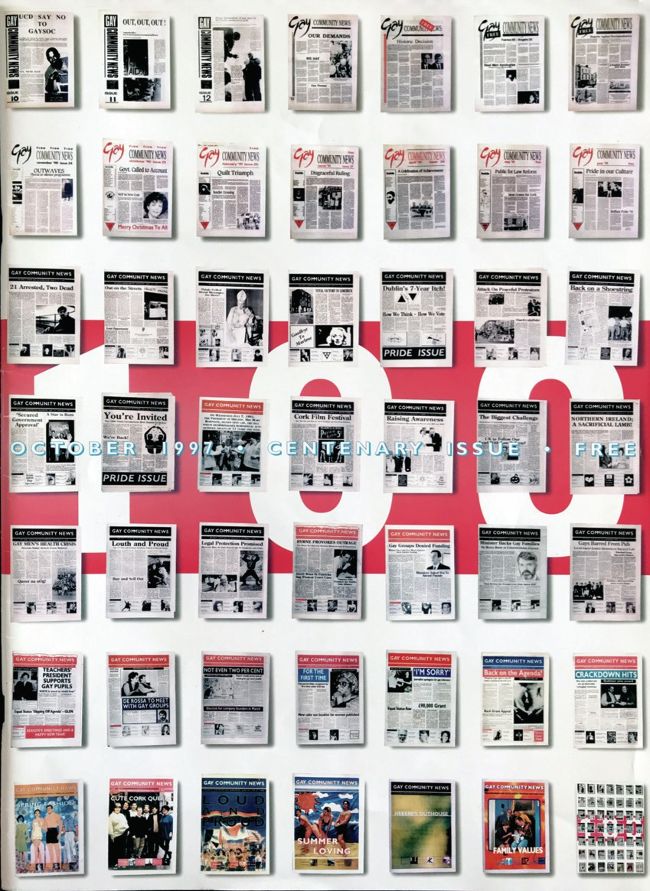
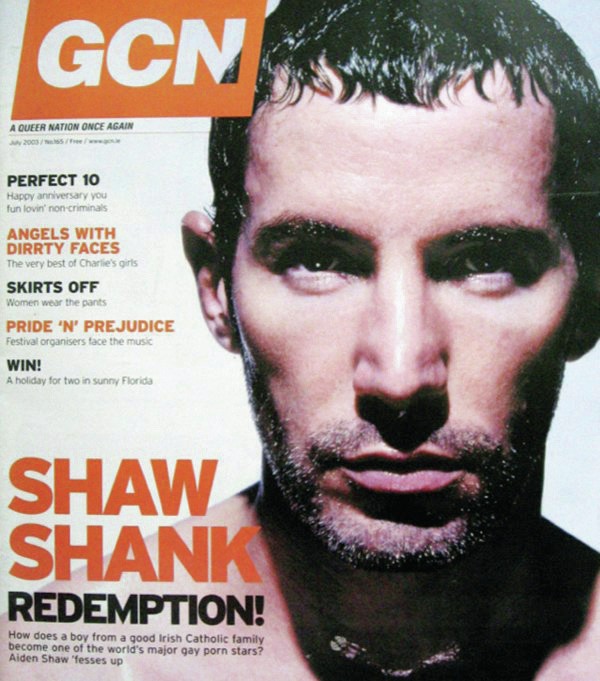
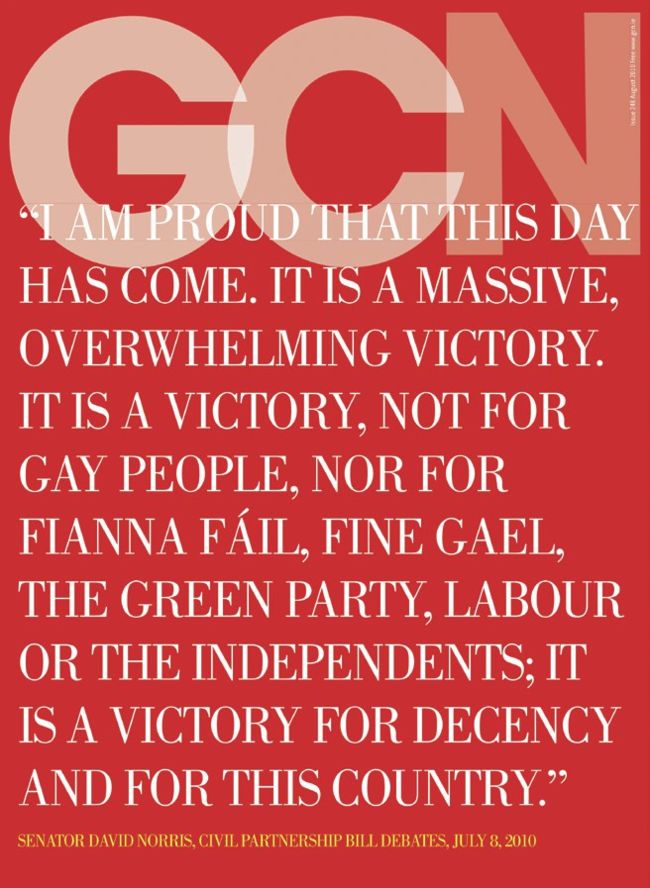
Desperation and boundless self-belief can make for a heady mix. Such was the case when Atlantic Philanthropies’ support inevitably came to an end, forcing an imaginative production team at the magazine to help establish a weekly club night and plug some of the holes in the magazine’s finances. Not only does Mother club provide a much needed income stream (not unlike that originally imagined of Flikkers), but it has insinuated itself with élan into the social fabric of Dublin’s queer nightlife. I mention all of this because by now it should be self evident how much GCN has been valued these past 35 years, by contributors and readers alike. To survive this long is no mean feat for a publication produced to exacting professional standards, yet one that is freely available and all the while walking a tightrope of often competing expectations.
I’ve said this before but it’s worth repeating here: When mainstream media ignores our stories, when civil society and government have attempted, as they have so many times in the past, to expunge the evidence of our lives and the tools we use to communicate with each other, we look to publications like GCN to be a witness to our struggle. GCN puts value on our struggle as a Rainbow Society. It fills our need to know and understand the journeys we’ve taken, the drama of our lived experience and the heartache of leaving friends and lovers behind. And, if it’s doing its job properly, it cautions us about unfinished business. A couple of years ago, the magazine regularly carried full page statements on ending Direct Provision. I struggle to think of any other Irish publication, niche or mainstream, that recognises its intersectional commitments in such a generous and urgent manner.
Born of the need to tell and celebrate our stories on our own terms, to advance essential notions of community, GCN’s primary remit hasn’t changed a jot. In an era of fake news, unethical media interference, lingering religious intolerance and naked hostility from ultra-conservative elements in society, the role and presence of GCN seems more vital than ever.
Like many of you, I hold GCN close to my heart (even when it has occasionally infuriated me by masquerading as a suburban wedding journal) but all the more so now, as it navigates a way out of the last pandemic and a much bigger threat facing print media.
Niche print publishing has collapsed worldwide as reading habits change, new technologies emerge and consumers migrate to a slew of different platforms for news and entertainment. Only those publishing houses with deep pockets or sustainable paywalls and inventive product will survive the current carnage. It’s a testament to the GCN team that, although the print publication disappeared briefly from view during the pandemic, the magazine showed verve and determination by expanding its broadcast channels on social media, making a considerable intervention on the fifth anniversary of both Marriage Equality and the Gender Recognition Act.
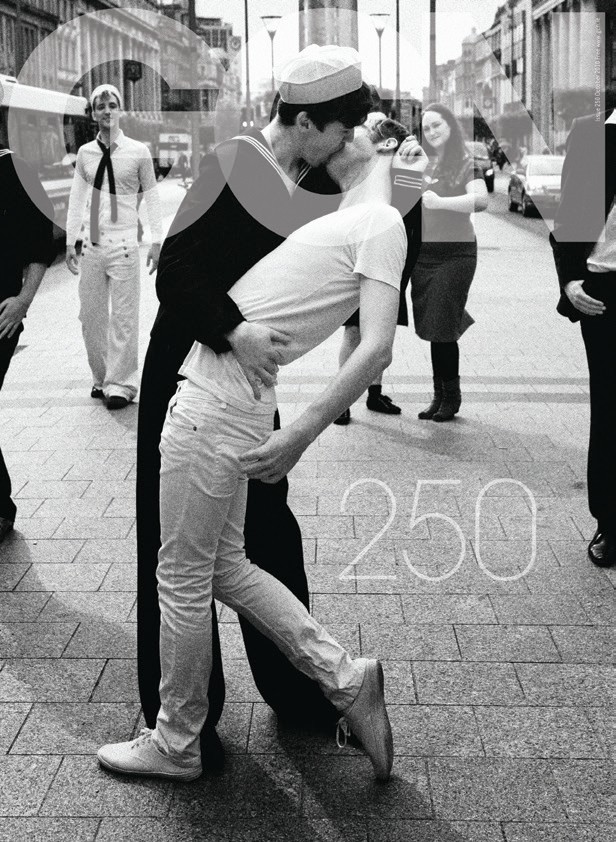
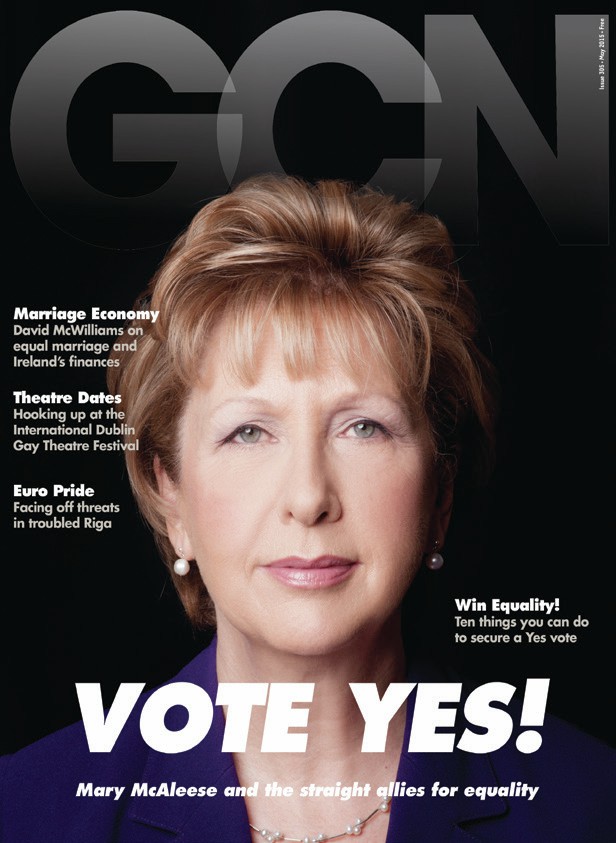
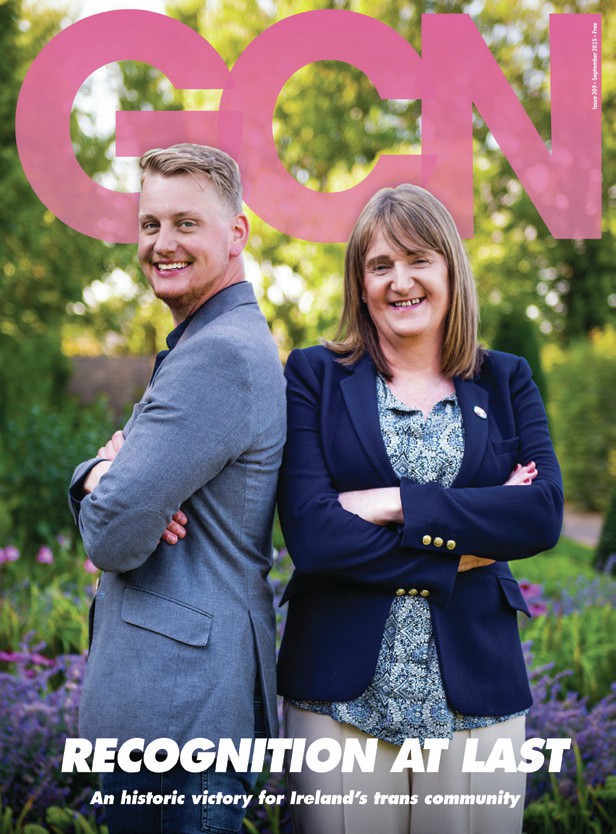

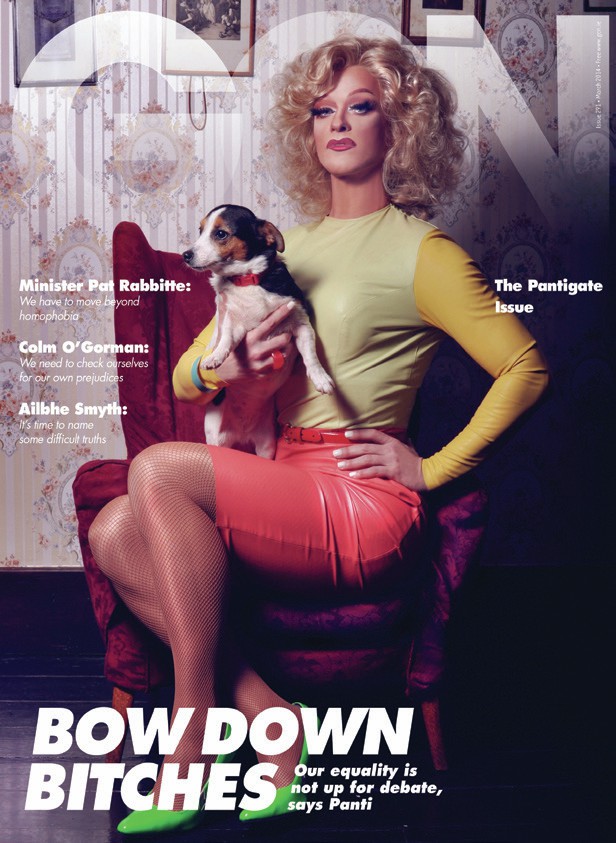
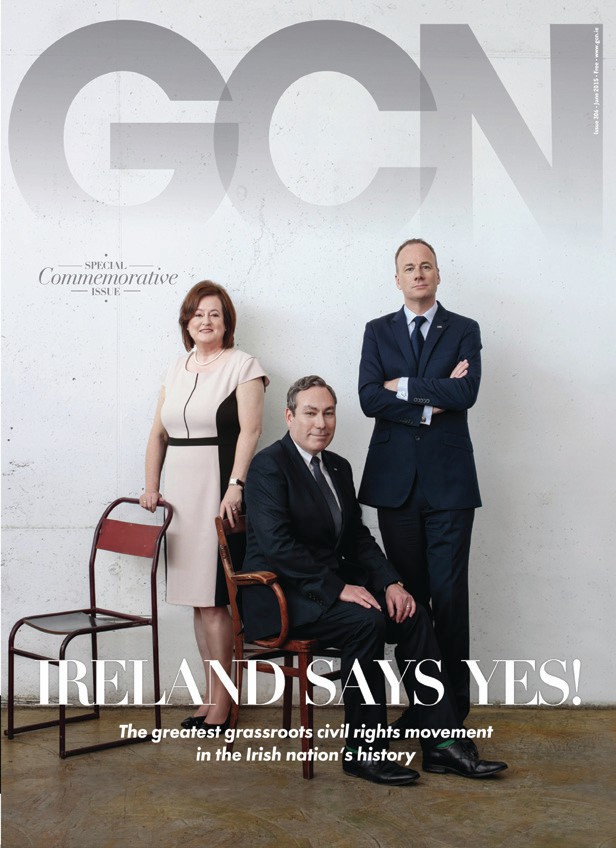
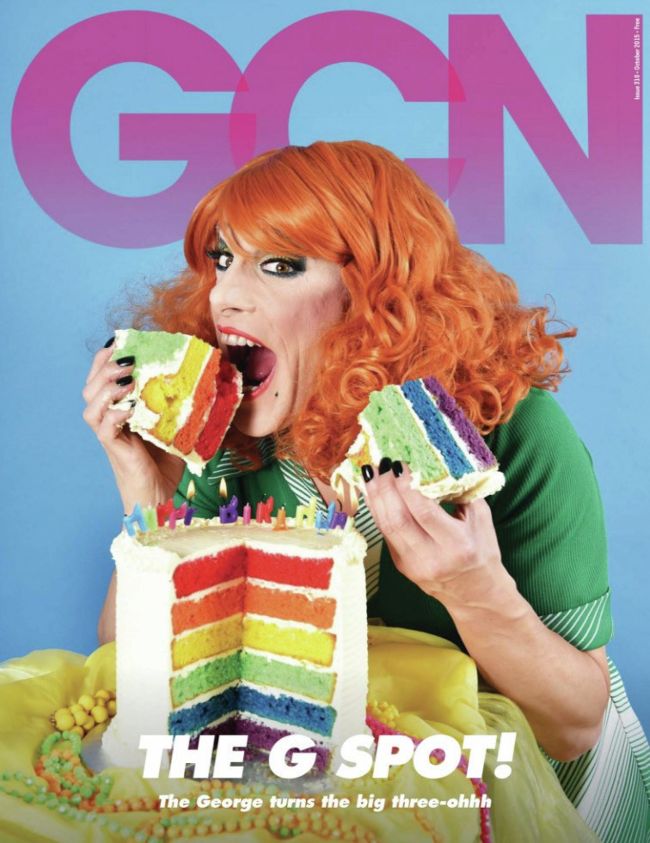
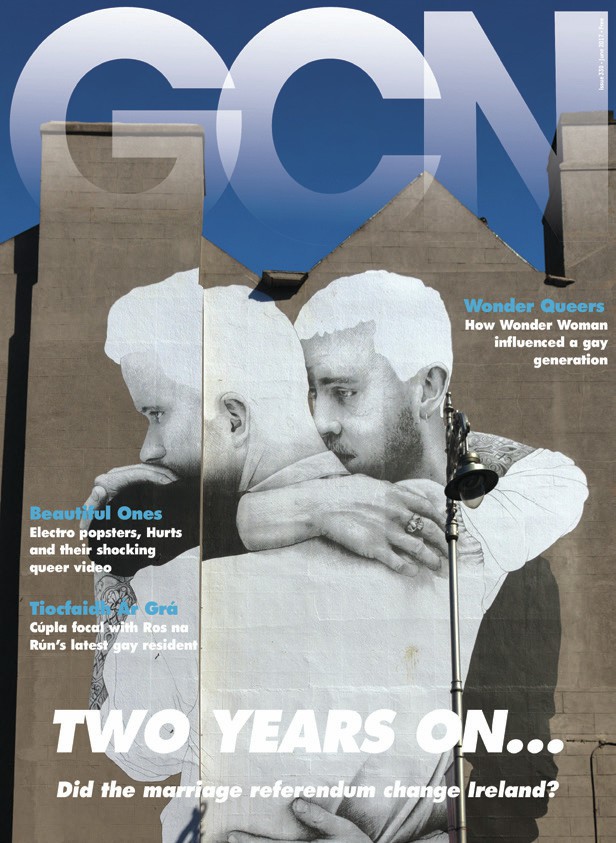
GCN’s ambitious digitisation programme is a significant marker in how the magazine imagines a future for itself, as a publishing house and as an essential research tool. I can’t describe the amount of time the GCN Archives team has spent having conversations about consumer interfaces, metadata protocols and tagging! That convo may seem like the arcane pursuit of academic researchers and librarians, but bringing the first 15 years of the mag to life in the most sustainable, user-friendly manner and making it widely accessible is a long overdue and critical undertaking. For the first time ever, journalists, broadcasters, academics and the general public everywhere will be able to trawl the magazine’s back catalogue and wonder at Ireland’s ‘queer paper of record’, one of the oldest, surviving LGBTQ+ community publishing ventures across the globe.
So here’s to you, GCN, and all who’ve contributed over the decades to making this magazine the essential historical document it has become.
Happy birthday. You’re looking hot at 35!
If you’d like to signal your love and appreciation for GCN, consider the ultimate birthday gift of a subscription. Or join me and for €150 per year, become a patron of Ireland’s queer paper of record.